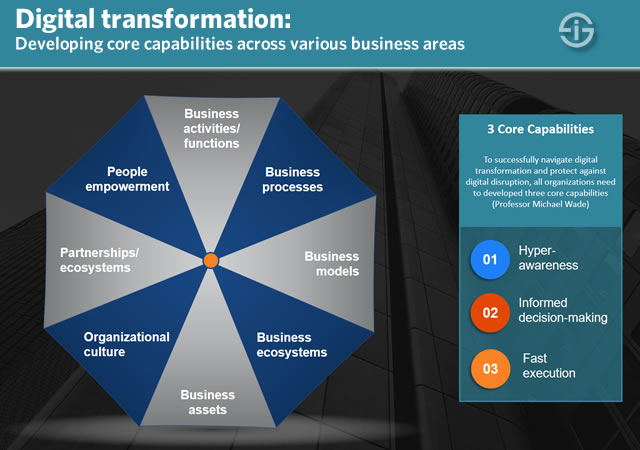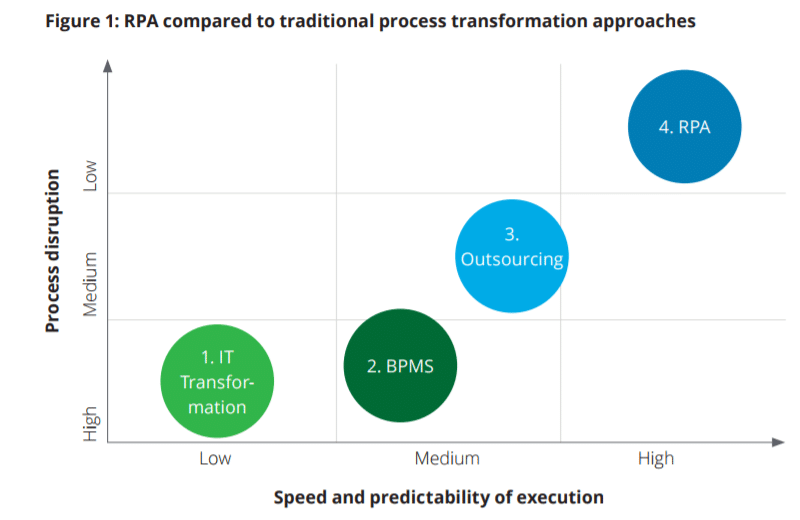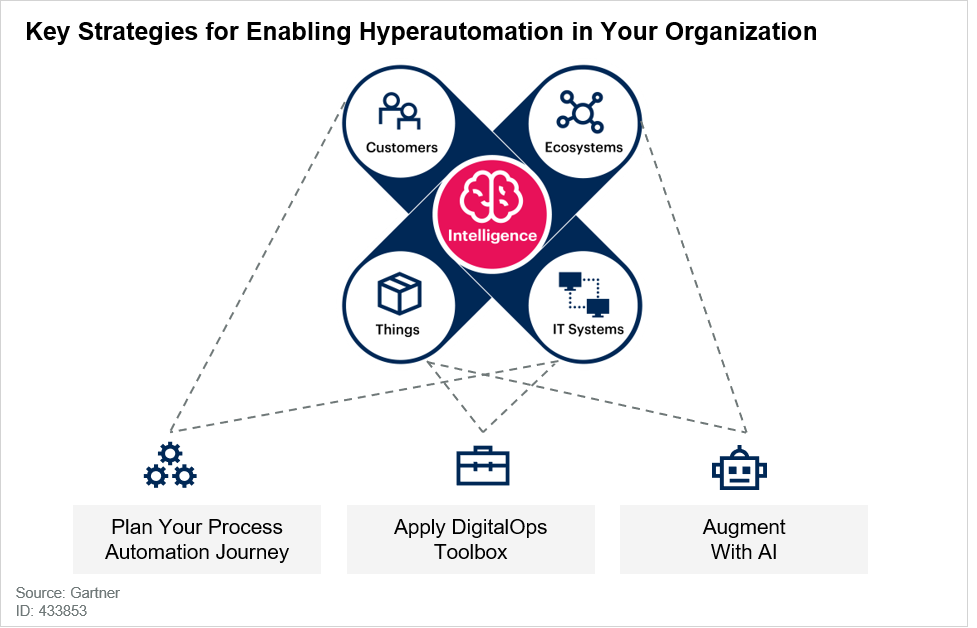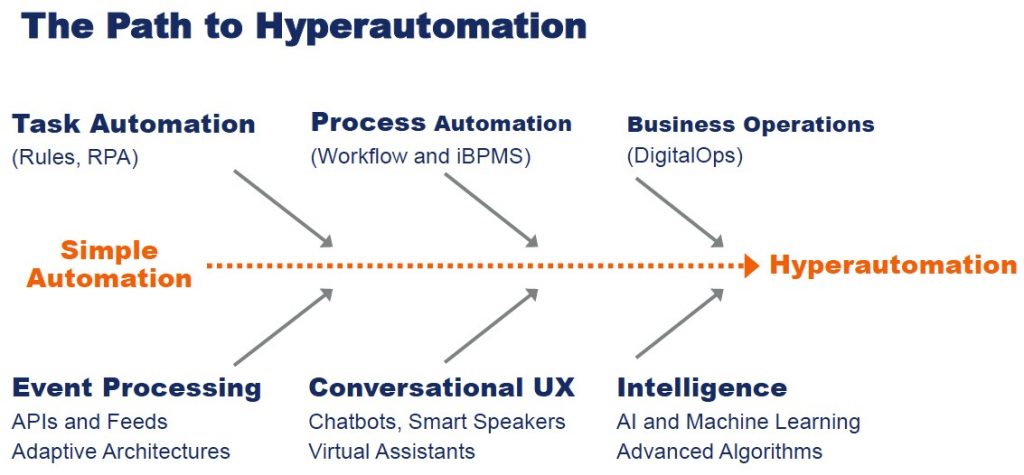- From Digital Transformation to Hyper-automation
- How Flow can affect your productivity and work
- RPA is not AI; Combine them for Superpowers
- Hyper-automation is the Pinnacle of Digital Strategy
The world of digital transformation and generally management consulting is very vast and increasingly saturated with people promising to deliver on massive organizational change who often miss the mark. The main issue is not that these consultants are delivering bad work, it’s often that the organization itself lacks what’s necessary to continue with the momentum that these highly paid snipers command.
At the organizational level, going to a DIGITAL FIRST strategy, through to Robotic Process Automation (RPA), getting into real machine intelligence (read AI) wields a great path toward hyper automation. Savvy CIOs will tell you: Digital transformation doesn’t come in a box — or a cloud. “It’s like most tech trends that get hyped up and overused,” as it’s become more mainstream, says Genpact CEO Tiger Tyagarajan, who advises enterprises on digital strategy.
So mainstream, in fact, that 40 percent of all technology spending will go toward digital transformations, with enterprises spending in excess of $2 trillion through 2019, according to IDC. But what, exactly, is that money funding? Replatforming on new technologies is critical. Forrester Research, for instance, recommends a disruptive approach to transformation that includes everything from incremental improvements to moonshot approaches.
But what does it all mean?

Digital Transformation Defined
Digital transformation marks a radical rethinking of how an organization uses technology, people and processes to fundamentally change business performance, says George Westerman, MIT principal research scientist and author of Leading Digital: Turning Technology Into Business Transformation. Digital transformation, which Westerman says should be led by the CEO, requires cross-departmental collaboration in pairing business-focused philosophies with rapid application development models.
Such sweeping changes are typically undertaken in pursuit of new business models and new revenue streams, driven by changes in customer expectations around products and services.
“Customer expectations are far exceeding what you can really do,” says Westerman. “That means a fundamental rethinking about what we do with technology in organizations.”

RPA and its journey so far
“Robotic process automation” is currently one of the fastest-growing industries and likely to reach 3.11 billion by 2025. It started emerging in the 2000s, 2003 is when Blue prism, Automation Anywhere, and UI Path introduced consolidated libraries in an RPA product like offering for companies to manage their end to end bot building life cycle within a single scalable platform. RPA found its first way through reducing costs in Business Process Outsourcing in the early days and then spreading to Shared Services, IT Outsourcing, and other Business areas within 4–5 years.
Just like most other technologies in its new fancy, RPA found its sweet spot with early adopters. They started using RPA products for quickly configuring business rules to automate simple tasks and processes which involved a high volume of data handling or/and application cross overs to earn quick wins by saving FTE times. Though these early adopter enterprises were able to build up to 10 robots to show quick wins, yet a high-value business impact still felt like a dream. These enterprises experienced two key challenges: first was about scaling RPA to a human-like digital workforce setting (say 50+ autonomous bots). The second was about building intelligent processes wherein business rules weren’t straight forward or binary.

Roadblocks and Challenges

Hyper Automation

What does success look like?
Digitalization and automated processes, intelligent software applications, and smarter machines are fundamental tenets to building an enterprise hyper-automation framework. Though Hyper automation may sound smooth and manageable in theory, its execution is severe and complicated, and no wonder one can find statistics on how 50% of the Automation project fails.
May it be a ground-up or top-down initiative Hyper automation requires consideration of a set of technologies across digitization, artificial intelligence, and connectivity. Hyper automation requires envisioning a complete end to end automation wherein processes are intelligent, machines are assistants, and procedures are capable of self-optimizing. However, this may sound like a far fetched scenario companies such as Amazon.
Many others have achieved some degree of success in several business areas, including merchandise returns, order fulfillment, and procure to cash. Other examples are companies like rocket mortgage which have capitalized early-stage hyper-automation to build an on-demand pull style adjudication and risk management processes, which potentially save consumers several hours from otherwise working with cumbersome mortgage application. The legacy applications required to pull together documents and data from various systems both at consumer and enterprise end and decisions had to travel across desks and hands by the time a final approval informed to the customer. By this time, the consumer may have already decided, lost interest, or even chosen a competitor who might be just a little faster than the incumbent.

TL;DR
Accelerated process agility and optimization
Reduce capital RPA and Other Automation deployment related costs
Avoid automating broken processes and redundant silo’s efforts and thus project failures
Uncover hidden digital value of enterprises with compounding returns

So what do you do when all signs point to having to go to University to gain any sort of advantage? Unfortunately it’s the current state of affairs that most employers will not hire you unless you have a degree for even junior or starting jobs. Once you have that degree, coming to my Mentor Program, with 1000ml with our Patent Pending training system, the only such system in the world; is the only way to gain the practical knowledge and experience that will jump start your career.
Check out our next dates below for our upcoming seminars, labs and programs, we’d love to have you there.
